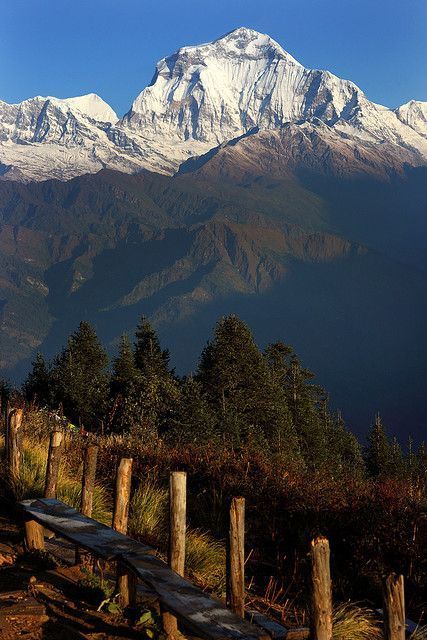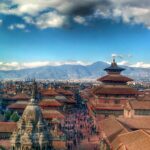Introduction
Poon Hill, located in the Annapurna region of Nepal, is a famous viewpoint that offers breathtaking panoramas of the Annapurna and Dhaulagiri ranges. Known as a must-visit trekking destination, it combines stunning sunrises, cultural immersion, and budget-friendly trekking opportunities.
- Introduction
- History of Poon Hill
- Fascinating Facts About Poon Hill
- Timeline of Poon Hill
- Significance of Poon Hill
- 1. Natural Significance
- 2. Cultural Importance
- 3. Adventure & Tourism
- 4. Economic Contribution
- 5. Spiritual & Inspirational Role
- 6. Environmental Awareness
- Observance & Cultural Activities
- Wishing at Poon Hill
- Daily Life Impact
- FAQs About Poon Hill
- Important Tips for Trekkers
- Importance in Society
- Conclusion
For travelers seeking cheap vacation ideas with adventure and nature, Poon Hill provides a perfect mix of scenic beauty, local culture, and trekking thrill. From lush rhododendron forests to remote Gurung villages, every step brings travelers closer to Nepalese mountain culture and Himalayan majesty.
This guide covers history, fascinating facts, timeline, significance, observance, wishing, FAQs, daily life impact, and societal importance, written in a human-friendly style with engaging insights.
History of Poon Hill
Indigenous Pathways: Historically, Poon Hill served as a trading and migration route for Gurung and Magar communities.
Trekking Popularity: The viewpoint gained international attention in the late 20th century, as trekkers explored the Annapurna region.
Trail Development: Local communities established tea houses, lodges, and guiding services, making trekking accessible to budget travelers.
Cultural Preservation: The trail passes through traditional villages, helping preserve local architecture, festivals, and lifestyle.
Fun Fact: Poon Hill is famous for its sunrise views, where the first rays illuminate the snow-capped peaks, creating a magical Himalayan panorama.
Fascinating Facts About Poon Hill
Panoramic Views: Offers 360-degree views of Annapurna, Dhaulagiri, Machapuchare, and Hiunchuli.
Accessible Trekking: Poon Hill Trek is short (4–5 days) and beginner-friendly, ideal for travelers with limited time.
Rhododendron Forests: Trek through colorful rhododendron and oak forests, especially vibrant in spring.
Local Villages: Encounter Gurung and Magar villages, experiencing homestays, local cuisine, and cultural interaction.
Sunrise Spectacle: Most trekkers hike early morning to witness the golden Himalayan sunrise.
Wildlife & Nature: Home to Himalayan birds, monkeys, and alpine flora, making it biodiversity-rich.
Timeline of Poon Hill
Ancient Era: Used by local communities for trade and migration.
1970s–1980s: Trekking introduced to international tourists.
1990s: Tea houses and lodges developed, making the trek accessible for all.
2000s: Annapurna Conservation Area promoted eco-tourism and sustainable trekking.
Present: Poon Hill is a top trekking destination in Nepal, attracting both international and domestic travelers.
Significance of Poon Hill
1. Natural Significance
Poon Hill showcases Himalayan biodiversity, forest ecosystems, and panoramic mountain landscapes, inspiring nature lovers and photographers.
2. Cultural Importance
The trek passes through Gurung and Magar villages, preserving architecture, festivals, and traditions while offering cultural immersion.
3. Adventure & Tourism
Poon Hill is a short yet rewarding trek, perfect for adventurers seeking mountain views without extreme altitude.
4. Economic Contribution
Supports local tea houses, guides, porters, and handicraft shops, providing sustainable income for the communities.
5. Spiritual & Inspirational Role
Many trekkers use the journey to meditate, reflect, and find personal inspiration amidst the serene Himalayan backdrop.
6. Environmental Awareness
Part of the Annapurna Conservation Area, promoting eco-friendly trekking and responsible tourism.
Observance & Cultural Activities
Local Festivals: Villages celebrate Dashain, Tihar, and Maghe Sankranti, offering cultural experiences for trekkers.
Religious Sites: Small monasteries and shrines along the trail provide spiritual insight.
Community Interaction: Trekkers can join homestays, local cooking, and cultural activities, fostering cross-cultural understanding.
Guided Educational Tours: Learn about Himalayan ecology, local culture, and sustainable trekking practices.
Wishing at Poon Hill
Visitors often make wishes while watching the sunrise or meditating on the viewpoint:
🌄 “May my journey be filled with clarity, courage, and inspiration.”
🕉️ “Wishing for peace, health, and happiness for all beings.”
🌸 “May every sunrise remind me of hope, gratitude, and resilience.”
These practices connect travelers to the spiritual and natural essence of the Himalayas.
Daily Life Impact
Poon Hill trekking influences trekkers, locals, and society:
For Trekkers: Provides physical challenge, scenic inspiration, and cultural learning.
For Locals: Generates income through lodges, tea houses, guiding services, and handicrafts.
For Society: Promotes heritage preservation, eco-tourism, and cultural awareness.
Students, photographers, and adventure travelers gain a deep appreciation for Himalayan culture and nature.
FAQs About Poon Hill
Q1: How long does the trek take?
A: Typically 4–5 days, depending on pace and acclimatization.
Q2: What is the best season to visit?
A: Spring (March–May) for rhododendrons and Autumn (September–November) for clear mountain views.
Q3: Is it suitable for beginners?
A: Yes, it is beginner-friendly with moderate trekking paths.
Q4: Are accommodations available along the trail?
A: Yes, tea houses and lodges offer budget-friendly stays and local meals.
Q5: Can I witness sunrise from Poon Hill?
A: Absolutely! Sunrise is the most iconic attraction of Poon Hill, with peaks bathed in golden light.
Important Tips for Trekkers
Wear sturdy trekking shoes and layered clothing.
Start early morning to catch the sunrise and avoid crowds.
Stay hydrated and carry snacks for energy.
Respect local customs and environment, especially in villages.
Hire local guides or porters for a safe and informative trek.
Importance in Society
Poon Hill trekking is culturally, economically, and environmentally significant:
Cultural Preservation: Maintains Gurung and Magar traditions, festivals, and architecture.
Economic Support: Provides income through tourism, guiding, and local services.
Educational Value: Offers knowledge about Himalayan ecology, culture, and trekking practices.
Spiritual Experience: Encourages reflection, mindfulness, and connection with nature.
Community Pride: Strengthens heritage awareness, sustainable tourism, and cultural pride.
Conclusion
Poon Hill is more than a trekking destination; it is a journey of adventure, culture, and natural beauty. Affordable, accessible, and awe-inspiring, it provides travelers with a memorable Himalayan experience, blending physical challenge, scenic grandeur, and cultural enrichment.
🌄 Wishing for You: May your trek to Poon Hill inspire gratitude, courage, and mindfulness, letting every sunrise, mountain view, and village encounter enrich your journey with adventure, reflection, and cultural appreciation.








